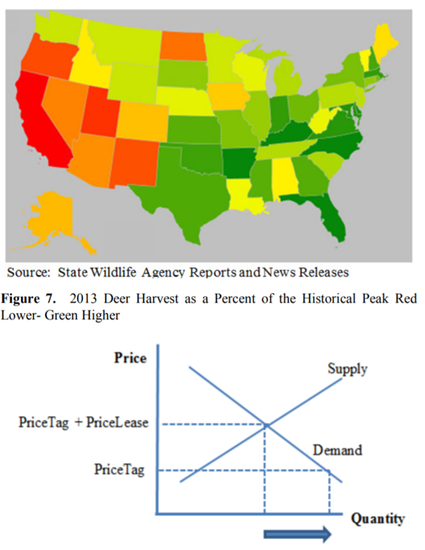
Article
Public Management Decisions Related to the Decline of California Deer Populations: A Comparative Management Approach
Environment and Ecology Research
(2016)
Abstract
Analysis of data obtained from an ongoing internet search indicates that the U.S. deer harvest has been falling since about the year 2000. California has had the largest decline from peak to recent harvest of any state. Declining timber sales are highly correlated with the decline in California. States like California with a relatively high proportion of public land, a low hunter success rate, and a persistently skewed buck-to-doe harvest ratio report a lower harvest as a percent of peak. An economic framework is presented to explain how the public decision making process for deer management and the practice of setting the price of deer hunting licenses well below market equilibrium incentivizes some of these result.
Keywords
- Deer Management,
- California Deer,
- Pricing,
- Licensing,
- Rural Economics,
- Renewable Resources and Conservation,
- Government Policy
Disciplines
- Business,
- Nonprofit Administration and Management,
- Organizational Behavior and Theory,
- Strategic Management Policy,
- Life Sciences,
- Population Biology,
- Terrestrial and Aquatic Ecology,
- Forest Management,
- Systems Biology,
- Animal Studies,
- Environmental Studies,
- Geography and
- Public Affairs, Public Policy and Public Administration
Publication Date
Spring 2016
DOI
10.13189/eer.2016.040203
Citation Information
G. Kent Webb. "Public Management Decisions Related to the Decline of California Deer Populations: A Comparative Management Approach" Environment and Ecology Research Vol. 4 Iss. 2 (2016) p. 63 - 73 Available at: http://works.bepress.com/kent_webb/30/
Creative Commons license

This work is licensed under a Creative Commons CC_BY International License.
